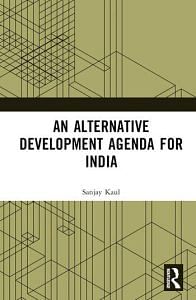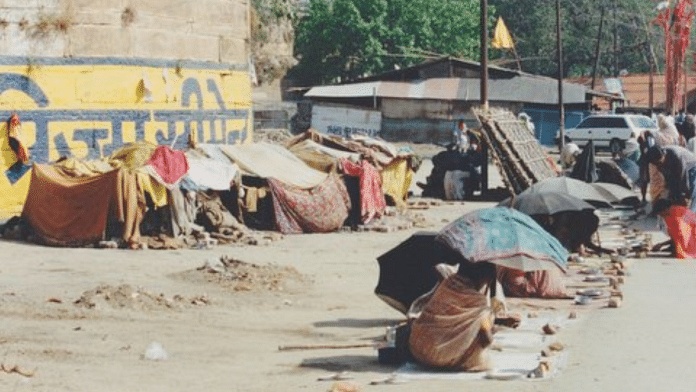The ideas we suggest for redesigning and restructuring the country’s priorities rest on two fundamental planks. The first is a robust and clear understanding of the target audience, particularly the neediest households; the second is a fuller understanding of government institutions and implementation structures. We should be solution-oriented and the prescriptions suggested are those that will certainly work.
Understanding Poverty
Let us look at the day in the life of a hypothetical poor family from the deep rural interior of India to understand the effects of poverty on those in that situation.
Birsa Oraon is a 32-year-old tribal who lives in Bamparda village of Deogarh district in Jharkhand, one of India’s most backward states. He and his wife Rasika live in a mud hut with their three children, Komal, Bindu, and Shibu. Birsa and his wife work as wage labourers on the farms in the village. The planting season is over, and the family’s cash reserves, never more than meagre, are running out. Birsa has already borrowed money from the village moneylender at an exorbitant interest rate. He is now waiting for the promised government-sponsored employment guarantee work of de-silting the village pond and visits the panchayat office every day to find out when the work will begin but in vain. He drowns his woes each evening at the local arrack shop. The local fair price shop has not received the PDS supplies for the month, and he has had to borrow more money to purchase rice from the market. Komal, his eldest child, is 8 years old and goes to school, while the 3-year-old Bindu goes to the anganwadi. Rasika has found a part-time job, which means that Komal has to occasionally skip school and stay at home to look after her younger siblings. Every day, the family eats the meagre portions of rice and watery dal that Rasika puts together and goes to sleep, with little hope for a better tomorrow. Rasika has heard of a vaccination camp the following day, and Shibu, their 5-month-old, is due for the next shot. However, Rasika is so trapped in her daily struggles that she does not take him for vaccination…
Also read: Private sector good, public healthcare bad? Here’s how Chhattisgarh broke the myth
To understand the poor, we need to put ourselves in Birsa and Rasika’s shoes. Nobel laureates Abhijit Banerjee and Esther Duflo observe that the poor often do not display what is considered ‘rational’ behaviour. As in the case of Birsa and Rasika, the poor are less likely to get their children vaccinated or regularly send their children to school. The poor in a village are also most unlikely to treat their water before drinking it. In India, as in other developing economies, the adoption of government programmes by the poor is slow. Not only is the quality of services sub-standard on the supply side, but the ‘demand’ side is also equally weak. Even if the poor are made aware of the programme’s benefits, they do not always access it. Deficiency of service or lack of knowledge does not fully explain such behaviour. Economists Sendhil Mullainathan and Eldar Shafir attribute this behaviour to ‘scarcity’ and bandwidth: ‘poverty is the most extreme form of scarcity.’ The scarcity of resources creates a scarcity of bandwidth. When stressed, and in a ‘scarcity’ mindset, low-income families have a challenging time distilling information and making the right choices. This behaviour has nothing to do with intelligence. If the poor could afford the luxury of devoting careful thought and attention to improving their lives, they would undoubtedly participate in programmes intended to help them. Poverty imposes a hefty attentional ‘tax’ which, along with the ‘scarcity’ mindset, is the principal cause of such sub-optimal behaviour.
Struggling with hunger, debt, work uncertainties, Birsa and Rasika have no time to think of anything else. Birsa wants to work and provide for his family. Rasika wants to have her one-year-old vaccinated. Yet, they do not do so; they are focused on mere survival. This ‘scarcity’ results in their inability to send children regularly to school or get them vaccinated. At the other end of the spectrum, Birsa always applies to the local moneylender for a loan, because that assures instant money. Expecting Birsa to utilise alternative financing resources would be asking too much; though interest rates are lower at formal financial institutions, the documentation and delay involved are enough to make them an unattractive option for the poor.
Also read: Hidden agendas, corruption, tokenism—why social work and politics cannot survive together
Banerjee and Duflo suggest that programmes for low-income families need to be more ‘fault-tolerant.’ They observe that ‘the poor lack critical pieces of information and have some inaccurate deep-rooted biases and beliefs.’ All these factors mean the poor end up making faulty decisions. Banerjee and Duflo do not have all the answers, but their work is valuable, and their approach is a radical re-conceptualization of poverty policy. The point is that there is now abundant evidence on strategies that work and form the basis for the recommendations that we will consider.
While poor households should certainly be the focus, there is a fairly complex problem at hand: Who qualifies as poor? How many are there? Where can we find a working list of low-income families that should constitute the government’s target group? This is a highly contentious issue. Each government programme – even each state – adopts different criteria to identify eligible poor households for coverage under their schemes. For example, under the public distribution system (PDS), over 70 percent of all households are covered, much more than the ‘below poverty line’ (BPL) estimates. The government Economic Survey released in January 2020 recommends that the PDS should only cater to the bottom 20 percent of families. Similarly, under the Ayushman Bharat health protection scheme, the coverage is 40 percent of households based on the socio-economic census; that too has many inaccuracies. Again, banks have different criteria for identifying beneficiaries under the Jan Dhan savings account scheme.
The crucial takeaway from this is that lists and inclusion criteria for beneficiary families are extremely variable. Further, the enumeration of the poor by the government machinery has been ad hoc and arbitrary. Multiple categories and lists add to the complexity. Maintaining these various lists for different departments saps the administration’s energy and bandwidth, besides creating vested interests.
 This excerpt from Sanjay Kaul’s ‘An Alternative Development Agenda for India’ has been published with permission from Taylor & Francis Books India.
This excerpt from Sanjay Kaul’s ‘An Alternative Development Agenda for India’ has been published with permission from Taylor & Francis Books India.



